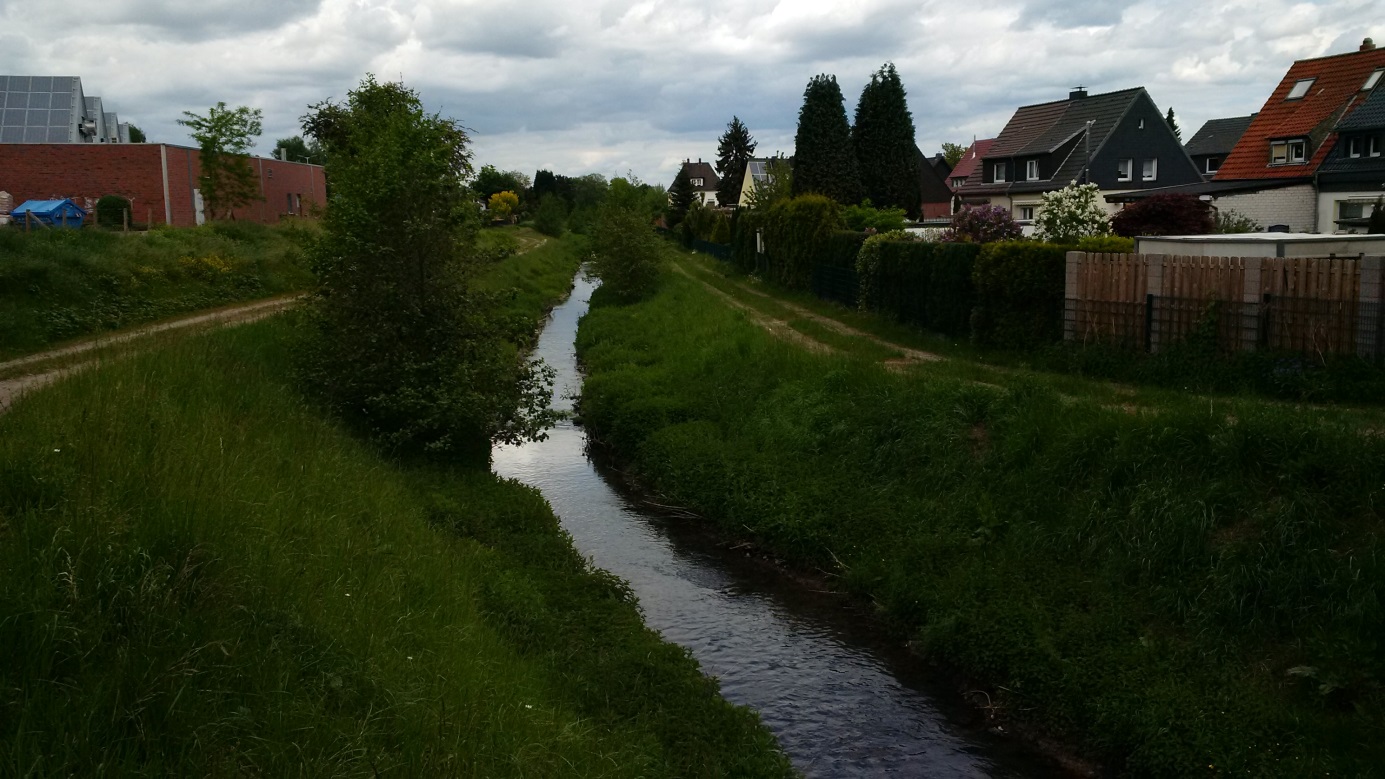Transforming the water body to nature-like banks
Renaturation of Heerener Mühlbach
Source: Anke Althoff, Lippeverband
Given the history of the Ruhr region, the Heerener Mühlbach was a canalised water body used as an open wastewater system. Conducting a mixture of waste and storm water in a straight concrete bed, the water body got classified as heavily modified according to the EU Water Framework Directive and required that a number of problems be resolved. Discharges of wastewater in the stream derogated the ecosystem tremendously and the concrete bed of the water body and the specific management of the banks harmed biodiversity. Another problem was the dangerous shape of the canal which prohibited the recreational use of the water body. And finally, bad smell regularly disturbed the neighbourhood. As a first essential step towards ecologic enhancement, a sewer pipe was placed underground along the river. The concrete bed was then removed (apart from few exceptions, e.g. under bridges), which led the river to flow on a new sole that was higher and wider than before and meander where possible. The hard banks were converted into nature-like banks. The initial plantation is complemented by wild and natural vegetation: green plants have the chance to flourish along the blue water body.
A precondition for the nature-like development of the water body was the separation from waste water and clean surface water. Thus, the construction of the underground sewer was the absolute necessary first step. For the development of biodiversity, it was important to give as much room to the water body as possible; adjoining property was thus included in the creation of wetlands. Ultimately, the support of the community and decision-makers made the planning and implementation possible.
In other locations where water bodies were ecologically enhanced by the water board, too much initial vegetation was planted shortly after completion of the construction works. As nature develops itself as soon as the conditions are good, the vegetation grew to such an extent that the trees and shrubs required almost the full amount of water coming from the water body, turning the habitat into a purely green corridor without open water. The green-blue corridor has now developed into a balanced ecosystem with the water body and adjoining wetlands.

